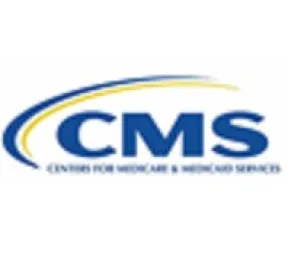On February 24, 2022, the Centers for Medicare and Medicaid Services (CMS) Innovation Center announced a Request for Applications (RFA) for the Accountable Care Organization (ACO) Realizing Equity, Access, and Community Health (REACH) model—a redesign of the Trump administration’s Global and Professional Direct Contracting (GPDC) model. The application portal will be available beginning March 7, 2022, and will close at 11:59 pm Eastern on April 22, 2022. Current Direct Contracting Entities (DCEs) will not be required to submit an application, and will be accepted into the ACO REACH model if they have a strong compliance record in the GPDC model and agree to comply with REACH model requirements.
This On the Subject covers some of the significant changes to the GPDC model reflected in the new ACO REACH model. A CMS summary of the model changes is available here.
IN DEPTH
Background on Direct Contracting
In 2019, the Trump administration announced three direct contracting models as part of its Primary Cares Initiative: the Geographic, Global and Professional models. The GPDC model built on the Innovation Center’s advanced ACO model portfolio, including the Pioneer and Next Gen ACO models. Some key differences from other Medicare ACO models included additional cash flow options, lower beneficiary thresholds that allowed entities with less experience with traditional Medicare populations to participate, and lower thresholds for provider participation in the DCE’s governance structure. GPDC used the same alignment methodologies—claims-based and voluntary alignment—as other Medicare ACO models. Beneficiaries in these models retained access to any Medicare provider and had all the rights and protections of traditional Medicare beneficiaries. Entities began participating in the GPDC model in an implementation period in October 2020; the first performance year (PY) began in April 2021. The Biden administration announced subsequently that it would not take additional applicants for the second cohort in 2022, but would allow deferred applicants and Next Generation ACOs to participate in the second performance year. A full list of 2021 and 2022 participants, nearly 100 entities, is available here.
The Trump administration also announced the direct contracting model options also included a Geographic track. This model incorporated new features, allowing any HIPAA-covered entity to participate, and would have included random alignment of beneficiaries in select geographic areas, in addition to claims-based and voluntary alignment. Although the Trump administration announced that it would launch the Geographic model in 2021, the Biden administration placed the model under review before any entities applied.
For a detailed explanation of the GPDC and Geographic models, see our previous analysis here.
Direct Contracting Controversy
The direct-contracting model portfolio faced increasing criticism on Capitol Hill, including a letter signed by 54 Democratic members of the House of Representatives and statements made at a hearing by Senator Elizabeth Warren (D-MA) calling for immediate termination of the model. Criticisms seemed to focus on the auto-alignment feature of the Geographic model, erroneous assertions that patients were subject to prior authorization and narrow networks, and allegations that the model represented the privatization of Medicare.
Over the past several weeks, advocates supporting the model launched a comprehensive campaign urging CMS to maintain the model with certain modifications. More than 200 provider organizations, including ACOs and DCEs, urged CMS to keep and improve GPDC. A group of 14 prior Obama administration officials likewise wrote in support of retaining and amending the model. Ultimately, CMS announced a combined approach, addressing some stakeholder concerns, while retaining model options for 2022 and beyond.
CMS Announces the Redesign of the Direct Contracting Portfolio
On February 24, 2022, CMS announced a redesign of the direct contracting model portfolio:
Cancelling Geographic Direct Contracting. CMS ultimately decided to officially cancel the Geographic Direct Contracting model. Although the model was never launched, the official cancellation is significant. As the Biden administration considers mechanisms to increase attribution among underserved populations, random or auto-alignment mechanisms could be one key policy tool used to align underserved beneficiaries who would not otherwise align through claims-based or voluntary alignment mechanisms because they do not have frequent interactions with the health system. Abandoning this mechanism now is a notable policy choice and something to watch for future model development, particularly because of the CMS goal of having every Medicare beneficiary and most Medicaid beneficiaries in an accountable care relationship by 2030.
Creating stability for DCEs for 2022. Despite calls for immediate termination, CMS retained the GPDC model for the remainder of 2022. This decision acknowledges the severe instability that would have been created had the Innovation Center terminated the model. DCEs can offer supplemental benefits and additional access to services funded through pre-payment options that would not otherwise be allowable under traditional Medicare, due to waivers and flexibilities that are available only under Innovation Center authorities. Premature termination of the model would have meant massive disruption to provider contracts and to Medicare benefits for seniors currently participating in these models. By extending the model for 2022, CMS created a smoother glidepath into the new ACO REACH in 2023.
Transitioning GPDC to ACO REACH in 2023. CMS also announced that it would address some of the key complaints about GPDC in ACO REACH, a redesign of the GPDC model. The ACO REACH model modifies the GPDC model according to three overarching goals: (1) advancing health equity to bring the benefits of accountable care to underserved communities; (2) promoting provider leadership and governance; and (3) protecting beneficiaries and the model through enhanced participant vetting, monitoring and transparency.
ACO REACH Model Overview
While some aspects of the ACO REACH model remain the same as in the GPDC model, CMS modified several key model design elements, including the ACO’s ownership and governance structure, health equity requirements and incentives, benefit enhancements, monitoring and compliance requirements, risk adjustment methodology, and other components of the financial methodology.
The model will run through four performance years, beginning on January 1, 2023, and ending on December 31, 2026. Like GPDC, accepted applicants will also have the option of participating in an implementation period in advance of the first performance year; for REACH, that will run from August 1 through December 31, 2022.
Participant Types
As in the GPDC model, the ACO REACH model has three categories of participation: Standard ACOs, New Entrant ACOs and High Needs Population ACOs. Selection into one of these categories is based on the organization’s level of experience with accountable care models and based on the population served:
-
Standard ACOs have substantial experience serving traditional Medicare patients, including dual eligibles, who are aligned to an ACO through voluntary or claims-based alignment. Standard ACOs may have gained their experience through participation in Innovation Center shared savings models and/or in the Medicare Shared Savings Program (MSSP).
-
New Entrant ACOs have not traditionally provided services to the traditional Medicare population and will primarily rely on voluntary alignment during the first few model performance years (although claims-based alignment will also be used).
-
High Needs Population ACOs serve traditional Medicare patients with complex needs, including dual eligibles, who are aligned to an ACO through voluntary alignment or claims-based alignment. CMS expects that High Needs Population ACOs will implement a care model designed for beneficiaries with complex needs, such as the Programs of All-Inclusive Care for the Elderly (PACE).
New to ACO REACH, CMS is clarifying in the RFA that the model is intended only for applicants that serve a general, heterogenous population of fee-for-service (FFS) Medicare beneficiaries or sub-populations for which there is no existing targeted total cost of care initiative. As an example, the RFA states that organizations that serve primarily beneficiaries with chronic kidney disease or end-stage renal disease should not apply for ACO REACH and are instead encouraged to apply for Kidney Care Choices.
Risk-Sharing Options
Like the GPDC model, ACO REACH offers two risk-sharing options for participating ACOs. The Professional option is a lower-risk-sharing arrangement (50% of savings/losses) in which the ACO receives a Primary Care Capitation Payment, a risk-adjusted monthly payment for primary care services provided by the ACO’s participating providers. The Global option is a higher-risk-sharing arrangement (100% of savings/losses) with two available payment options. Global participants can elect to receive either a Primary Care Capitation Payment (as available under the Professional option) or a Total Care Capitation Payment, a risk-adjusted monthly payment for all covered services (including specialty care) provided by the ACO’s participating providers.
Advanced Alternative Payment Models Status
ACO REACH’s Global and Professional risk-sharing options currently both meet the criteria under 42 C.F.R. § 414.1415 to be Advanced Alternative Payment Models (Advanced APMs). CMS anticipates that both ACO REACH risk-sharing options will continue to meet the criteria for all subsequent performance years, subject to annual Advanced APM determinations. Eligible clinicians included on the REACH ACO’s Participation List (defined in 42 C.F.R. § 414.1305) will be eligible for Qualifying APM Participant (QP) determinations. However, ACOs and other Advanced APM participants should note that under current law, the advanced APM 5% bonus expires after the 2022 performance year/2024 payment year.
Key Changes from Direct Contracting and Implications
Governance
The RFA makes two notable changes to ACO governance beginning in PY2023. First, at least 75% of each ACO’s governing body must be held by Participant Providers or their designated representatives to ensure that participating ACOs operate as provider-led organizations. Previously, under the direct contracting model, Participant Providers were required to have only 25% control of the governing body. An ACO may request an exception to the 75% control requirement by submitting a proposal to CMS explaining how its governing body will otherwise involve Participant Providers in innovative ways. Any exception granted will be at the discretion of CMS.
By implementing this requirement, CMS is aligning ACO REACH with the provider governance thresholds set forth in MSSP and in the Next Gen ACO Model previously tested by the Innovation Center. The RFA indicates that the governing body must have “responsibility for oversight and strategic direction of the ACO and will be responsible for holding ACO management accountable for the ACO’s activities.” This includes the authority of the governing body to appoint and remove the chief executive of the ACO, but does not provide any other examples of specific rights that must reside with the ACO’s governing body rather than its parent company.
Second, the same individual may no longer fill both the Medicare beneficiary and consumer advocate roles on the ACO governing body, and CMS now further explicitly requires that each advocate must have voting rights. Consistent with the Innovation Center’s strategic goal to create patient-centered models, CMS emphasized in the RFA that it strongly encourages greater beneficiary participation in advising and informing ACO activities beyond the ACO governing body representation requirement. Where state law prohibits beneficiary representation on the governing body, the ACO must establish an alternative for ensuring that its procedures and policies adequately reflect beneficiary perspectives. Any alternative mechanism is subject to CMS approval.
Payment Model Changes
CMS made several key changes to the financial methodologies for ACO REACH Participants:
-
Reduced the discount for the Global model. In the Direct Contracting model, CMS applied a discount to the performance-year benchmark that increased from 2% in 2021 to 5% over the duration of the model. In response to feedback from provider stakeholders, CMS reduced the discount in the ACO REACH model to range from 2% to 3.5% over the duration of the model.
|
|
PY2021 |
PY2022 |
PY2023 |
PY2024 |
PY2025 |
PY2026 |
|---|---|---|---|---|---|---|
|
Global DC |
2% |
2% |
3%* |
4%* |
5%* |
5%* |
|
Global REACH |
— |
— |
3% |
3% |
3.5% |
3.5% |
* Note: As the ACO REACH model begins in PY2023, the DC model ceases to exist.
-
Reduced quality withhold. In REACH, like Direct Contracting, the quality incentive will be structured as a withhold from the trended, regionally blended, risk-adjusted benchmark. The ACO then earns back some or all of the withheld amount depending on the ACO’s performance on quality measures and the ACO’s performance on continuous improvement/sustained exceptional performance (CI/SEP) criteria. The CI/SEP criteria under the REACH model will be detailed further in summer 2022. In the REACH model, the Innovation Center will reduce the quality withhold to 2% for PY2023 through PY2026, compared with a 5% quality withhold in Direct Contracting for those same years. The agency noted that this change was made in response to stakeholder feedback. Taken together, the reduced discount and reduced quality withhold should encourage greater provider participation in the model.
-
Equity benchmarking adjustment. Beginning in PY2023, CMS will apply an adjustment to the benchmarks of ACOs depending on the proportion of underserved beneficiaries an ACO serves. CMS will identify underserved beneficiaries using a composite measure that incorporates a combination of Area Deprivation Index and Dual Medicaid Status. CMS will stratify aligned beneficiaries and identify the top decile for an upward adjustment of $30 per beneficiary per month (PBPM) and the bottom five deciles for a downward adjustment of $6 PBPM. Each REACH ACO will receive a net benchmark adjustment based on the number of aligned beneficiaries in each category. CMS indicates in the RFA that its modeling suggests that most ACOs will be marginally impacted by the adjustment, about +1% for those with the highest proportion of underserved beneficiaries and –0.5% for those with the lowest proportion of underserved beneficiaries. Initial reactions indicated that this benchmark approach could attract new types of model participants who had previously taken a pass on Direct Contracting.
-
Risk adjustment. In Direct Contracting, two policies restrict growth in risk coding: (1) a coding intensity factor (CIF) limits risk score growth across the entire model; (2) a +/-3% symmetrical cap limits risk score growth over a two-year period. In ACO REACH, beginning in PY2024, CMS will modify the application of the risk score cap to (1) adopt a static reference-year population for the remainder of the model performance period; and (2) cap the REACH ACO’s risk score growth relative to the demographic risk score growth so that the +/-3% cap is appropriately adjusted based on demographic changes in the underlying population over time. We expect additional financial papers in summer 2022 that will detail the risk-adjustment changes and facilitate a deeper understanding of the proposed change.
New Benefit Enhancements
In addition to the benefit enhancements available for PY2021 and PY2022, CMS is proposing a new set of benefit enhancements that aim to leverage the relationships between beneficiaries and nurse practitioners, allowing ACOs to extend flexibilities under which NPs could undertake certain activities, including hospice care certification, certification of the need for diabetic shoes, certification of cardiac rehabilitation care plans, certification of plans of care for home infusion therapy, and referrals for medical nutrition therapy.
Additional Equity Information Collection
In alignment with the Biden administration’s goal of promoting health equity, the Innovation Center will require all REACH ACOs to develop and implement a Health Equity Plan, beginning in PY2023. REACH ACOs will submit annual Health Equity Plans in advance of each performance year for the duration of the model. The purpose of the Health Equity Plan is for ACOs to identify underserved communities within their aligned beneficiary populations and to implement initiatives to measure and reduce health disparities during the performance year. REACH ACOs must use template language provided by CMS—to be based on CMS’ Disparities Impact Statement—to develop their Health Equity Plan. The Health Equity Plan is a new requirement and additional guidance on content and implementation requirements will be forthcoming from CMS. REACH ACOs will also have additional reporting requirements related to the Health Equity Plan.
Considerations for Applicants
Screening and Disclosure Considerations for Investor-Backed Entities
As part of the screening process to determine eligibility for participation, CMS will conduct a program integrity review of the Applicant ACO or other relevant entities or individuals associated with the Applicant ACO. CMS notes that it may deny selection of an otherwise qualified Applicant ACO based on information found during the program integrity review. The review may include consideration of persons with an ownership or control interest in the Applicant ACO, key executives, equity partners (e.g., private equity or venture capital), and individuals or entities that the Applicant ACO expects will be Participant and Preferred Providers. Specifically, the Application Template requires Applicant ACOs to disclose each party with at least a 5% ownership interest in the Applicant ACO, as well as the ownership interests in the entities with an ownership interest in the Applicant ACO, including investment firms. Importantly, for purposes of the RFA, CMS defined “ownership interest” to mean the “[p]ossession of equity in the capital, the stock, or the profits of the subject entity.”
In addition, the Application Template further requires that if a privately held company that has an ownership or control interest in the Applicant ACO is a subsidiary of another privately held company, the Applicant ACO must list its parent company, or companies, and ownership interests in that privately held company. Applicant ACOs must disclose any relevant sanctions, corrective action plans, fraud investigations, outstanding debts owed to the Medicare program, criminal conduct and more that are related to these entities. As a result, investor-backed entities should carefully consider these requirements when completing the Application Template and structuring Applicant ACO ownership. From a policy perspective, CMS’s inclusion of these application requirements may be a recognition of the political interest, criticism and pressure exerted by some stakeholders in connection with requests to terminate or modify the Direct Contracting model.
Monitoring and Compliance Efforts
The RFA carries over many of the same monitoring and oversight requirements that were established under GPDC, including the requirement to have a compliance plan with certain attributes (e.g., designated compliance officer, compliance training) and CMS’s implementation of a monitoring plan that may include chart audits, a review of demographic data, interviews, site visits and more. In addition, CMS announced new monitoring and compliance efforts, including an annual assessment of whether beneficiaries are being shifted into or out of Medicare Advantage; an examination of an ACO’s risk score growth for the purpose of identifying inappropriate coding practices; increased use of data analytics to monitor service utilization; and a regular review of marketing materials to ensure that information being shared about the model is accurate, among other monitoring efforts.
Application Components and Timeline
CMS will evaluate Applicant ACOs based on the five domains included in the GPDC application, plus several additional domains. In the GPDC application, CMS evaluated applicants based on their (1) organizational structure, (2) leadership and management, (3) financial plan and risk-sharing experience, (4) patient centeredness and beneficiary engagement, and (5) clinical care. ACO REACH applicants will be evaluated within those domains and will also be evaluated on (1) whether they have a demonstrated, strong track record of “direct” patient care, (2) whether they have a demonstrated record of serving historically underserved communities with positive quality outcomes, and (3) whether their ownership structure imposes any “program integrity” risks.
Under current instructions, existing GPDC participants will not be required to re-apply to participate in the new model, but they will be required to sign new Participation Agreements and will be required to meet all ACO REACH requirements by January 1, 2023, to continue participation.
Conclusion
The ACO REACH model retains some of the core features of GPDC, including global payment options that made it attractive to providers interested in taking higher levels of financial risk and reward for their traditional Medicare patients. The new model responds to some critiques of the GPDC model by adjusting provider governance and the financial model, and by emphasizing health equity. Interested applicants should quickly evaluate the application materials and make a determination as to whether to apply, as the application requires in-depth disclosures and discussions of care management capabilities







 />i
/>i
